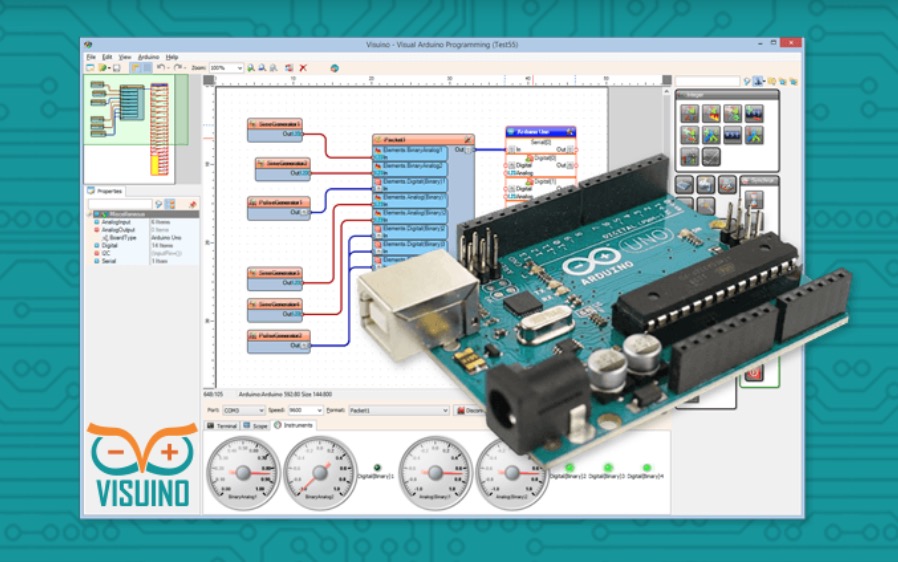Recent Posts
Visual Programming Environment For Arduino Boards And Teensy
Posted by on
Visuino, the latest innovative software from Mitov Software, is a visual programming environment, allowing you to program your Arduino boards in a visual way. It currently supports the official Arduino boards, Teensy, Femto IO, ESP8266, ESP32, Controllino, Goldilocks Analogue, FreeSoC2, chipKIT, Maple Mini, and other Arduino clones.
The components found in the Visuino software represent their hardware components and you will easily be able to create and design your programs using drag and drop. No equipment or hardware is needed to run the software in design mode. Once you have completed the design, you can connect the Arduino board, upload the sketch and run it.
For those people who are not strong on writing code but more on designing, compiling and creating Arduino programs has never been easier. Why waste time on creating code when we have done all the hard work for you already? When you have your Arduino board, and a great hardware design in mind, you will see it working within minutes, not hours.
If you are a hardware developer and don’t have much time to become an expert in software development, then you can let Visuino become your personal software expert. If you’ve been exposed to the existing offering from Arduino, you may be overwhelmed by the complexity of designing code to run your hardware components.
Due Core - Arduino Compatible SAM3X8E 32bit ARM Cortex M3 Module
The Due Core is a microcontroller board based on Arduino Due, featuring the Atmel SAM3X8E ARM Cortex-M3 CPU.
The Due Core is a compact version of the Arduino DUE. It integrates all peripherals required for the MCU, and all GPIO are connected to 2.54mm connectors. As a standard MCU core, the board has the following features:
- Compact size: All components are put on a 54 x 58mm 4-Layers PCB. All IOs are connected to a 116-pin 2.54 standard connector.
- Easy to use: All IOs are connected to 116pin 2.54 standard connector. It requires only a 5 VDC power supply to make it work.
- Stable design: High-quality 4-layer PCB layout, two 5V to 3.3V LDO onboard, one for digital and one for analog processing. Separate AVCC and AGND, to ensure optimum analog performance.
- Easy to set up the development environment: Uploading sketches through standard 6-pin UART interface, standard Micro usb connector, full use of existing resources .
- User-friendly design: Rich LED status indication, two onboard buttons, one is for MCU reset, and one is for Flash Erase. Unique jumper erase protection against the flash erased by mistake.
- Rich resources: All IOs are available for the user. The onboard I2C EEPROM is designed to compensate for the shortcomings of the standard SAM3X8E, which has no built-in EEPROM.
 Loading... Please wait...
Loading... Please wait...


